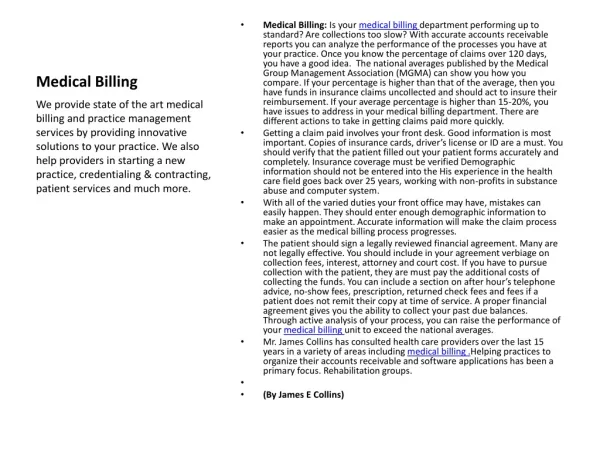Understanding Common Medical Billing Issues for PTs and OTs
70 likes | 79 Views
Revenue can easily be lost on a path with many stepping stones in the form of medical billing issues impacting your RCM. You can be effectively prepared to create a more profitable healthcare organization if you understand such medical billing challenges for Occupational(OTs) and Physical Therapy(PTs).<br><br>As a Physical Therapist (PTs) or Occupational Therapist (OTs), understanding common medical billing issues is vital for a successful practice.<br><br>Book an appointment with 24/7 Medical Billing Services at 1 888-502-0537/ info@247medicalbillingservices.com for efficient, cost-effective solutions .
Download Presentation 

Understanding Common Medical Billing Issues for PTs and OTs
An Image/Link below is provided (as is) to download presentation
Download Policy: Content on the Website is provided to you AS IS for your information and personal use and may not be sold / licensed / shared on other websites without getting consent from its author.
Content is provided to you AS IS for your information and personal use only.
Download presentation by click this link.
While downloading, if for some reason you are not able to download a presentation, the publisher may have deleted the file from their server.
During download, if you can't get a presentation, the file might be deleted by the publisher.
E N D
Presentation Transcript
More Related






















